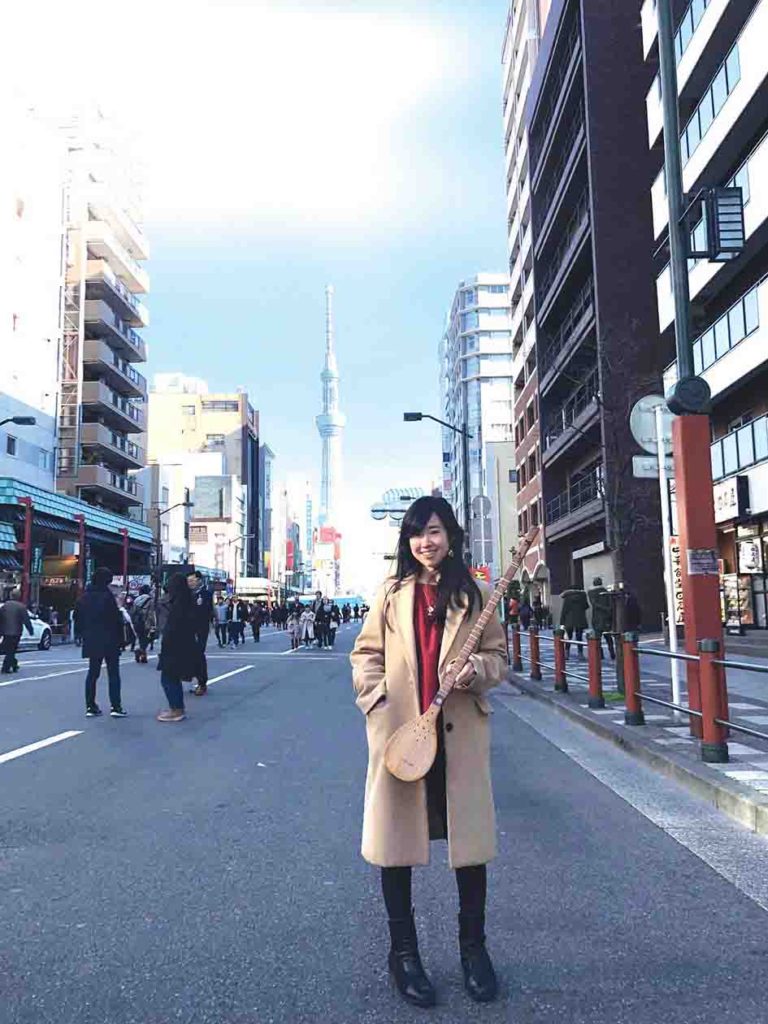On a hot afternoon in Tehran, we met a Japanese girl Sawako Ishii who had come to Iran to learn Persian languages. She has played the Persian musical instrument as well. with several other non-Iranian students at the International Center for Persian Language Teaching at the University of Tehran. Sawako Ishii was interested in playing one of the most popular Iranian traditional instruments, the SETAR, and was greatly encouraged after playing music. We chatted with Sawako to find out more about her motivations for learning the Persian language and Iranian Music.
Which motivation makes you interested to come close to Iranian culture especially learning Persian Languages and Music?
My first encounter with Persian music was when I made friends with Iranians in the United States, who sang and told me about Persian music. At that time, I found myself becoming interested in Iranian art, including the use of poetry and its rhythm in music. I was especially attracted by the music because it sounded like a conversation between the vocal and musical instruments. The more I listened to this music in different modes of radif system, the more I became to feel like learning each of them by myself. Later it also became significant to me to be able to read the poetry and lyrics used in the music and to understand the texts explaining about it. This kind of fascination with Persian music has motivated me to learn it as well as the Persian language further.

How do you feel about playing Setar? Do you think there may be some similarities between this kind of Iranian music instrument & Japanese ones?
For me, playing setar is a way of meditation and relaxation. By generating soft and calm, but sometimes intense sound, setar helps me to let my feelings go. Playing setar also means a lot to me because it has led me to meet the people who play Persian music. I appreciate the wonderful opportunities that I had a meeting and communicating with people in Iran, including the masters, through music. Also, regarding the similarities between Iranian and Japanese musical instruments, it was a big surprise that they share the same tuning. For example, setar and tar are tuned as do, so, do, (do,) in some musical modes. Likewise, a Japanese st” is tuned as do, so, do, in some musical pieces. They also use the same playing techniques, even though those techniques are called differently.
How do you feel about short-stay living and studying in Iran and visiting some part of the country?
Even though my stay in Iran was short, I had a chance to travel through the country. Spectacular cultural heritages such as Persepolis, Takht-e Soleiman and the ancient city of Susa were so impressing that they deepened my respect to the ancient Persian culture. Seeing the nature in various provinces, ranging from Kermanshah and Ilam to Gilan, was also memorable. Most importantly, I encountered a variety of cultures, lifestyles and values in each place I visited. Although we usually tend to generalize people and countries, this travelling experience made me strongly believe in the importance of paying attention to diversity.

I will keep learning Persian music and language, and in the future, I hope to be able to introduce them to Japan in their variety
Please Tell us a brief introduction about your job to our readers.
As a person who appreciates music as a fundamental human activity, I have sought and explored multiple roles of music at both individual and social level. In the last three years, I have researched on the activity of performing Iranian music in Japan as an MA student at the Tokyo University of the Arts. The purpose of the research was to deepen my idea on the relationship between music and migration, for instance, the significance that music has to the individual who has experienced migration. From next spring, I am going to work at the Hamamatsu Museum of Musical Instruments in Japan. There I would like to be able to create new platforms for experiencing music and musical instruments and having communication through music.
What will be your next plan to have with Iranian people. Living, working or study in future?
I will keep learning Persian music and language, and in the future, I hope to be able to introduce them to Japan in their variety. I strongly hope to collaborate with people from Iran to come up with new ideas to present them. It will be seen how this project goes, but I believe that cultural exchange and interaction beyond national borders has an essential role in removing mental borders among those who seem to be separated from each other in the contemporary world.
